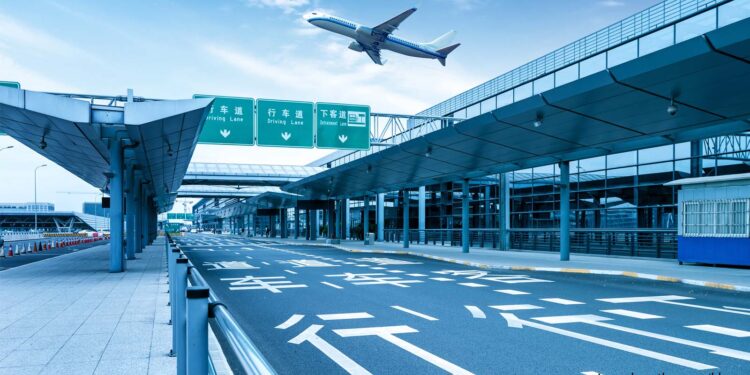Business Aircraft Operations to Shanghai – Part 3: Visas, Pets & Weapons

This is a post by author Jennifer Cai. Jennifer serves as the Operations Supervisor for Universal Aviation China in Shanghai. Universal Aviation China has aircraft ground handling facilities in Beijing, Shanghai, and Guangzhou. Jennifer can be contacted at jennifercai@universalaviation.aero.
This business aviation blog post continues from our article last week, entitled “Business Aircraft Operations to Shanghai – Part 2: Permits, Slots & CIQ.”
Caution is advised when planning for crew visa requirements to China. In the past all crew had required specific crew visas to arrive aboard general aviation (GA) aircraft and they often needed a different type of visa to depart via scheduled airline. Today, within the realm of crew visas, there are more options to consider and in certain cases crew are now able to obtain visas on arrival.
The following is an overview of what you need to know:
1. Crew visas
Crew will be admitted to China, at both Hongqiao (ZSSS) and Pudong (ZSPD), with any type of valid China visa. Approved visa types include “C” crew visas, business visas and tourist visa. While the ‘official’ requirement is that all crews have “C” visas this is no longer the case, in practice, at Shanghai and certain other airports. Once you enter via Shanghai you may continue on domestic legs without additional visa considerations.
2. Crew visas on arrival
Crew visas on arrival (VOAs) are possible at both Shanghai airports, unless you’re a national of 11 designated higher threat countries. The procedure, however, takes 40 – 60 minutes to complete upon landing, and this option should always be confirmed in advance with your ground handler. The only crew who may not take advantage of this option are nationals of Afghanistan, France, Kuwait, Iran, Iraq, Lebanon, Nigeria, Pakistan, Sri Lanka, the US and Yemen. Crew from Canada and Mexico, for example, may obtain visas on arrival while those from the US and Iran may not. It’s always best, however, to have visas upon arrival in order to avoid additional processing time, and potential delays, day of arrival.
3. Landing visa processing
If crew wish to use the VOA option at ZSSS paperwork should be forwarded to CIQ authorities, via your ground handler, four business days prior. Authorities will then confirm if VOA will be approved or not. Upon landing at ZSSS or ZSPD crew will need to sign a form and have a photo taken. They will normally receive their visa within 60 minutes. As this additional processing time may be an issue for crew coming off long flights it’s often advisable to obtain visas prior to arrival.
4. 72-hour visa free entry
Fifty one nationalities, including U.S. citizens, are eligible to apply for 72-hour transit visas when landing at certain airports in China, including Shanghai and Beijing. Note that this is an option only available to passengers, not for crew, and is only possible when you’re continuing on to a third country. Transit visas may be considered, for example, if you’re flying from Seattle (KSEA)-ZSPD-Singapore Seletar (WSSL) but not when flying KSEA-ZSPD-Anchorage (PANC), as explained in part 2 of this article series.
5. Passport validity
When entering China passports must be valid for length of stay. While it’s recommended to have at least six month remaining validity on passports when operating internationally China will accept crew/passenger passports with sufficient remaining validity to cover length of stay.
6. Departure clearance
For international departure both security and immigration are cleared within the FBO at ZSSS. In the case of ZSPD you’ll clear security/immigration in the main terminal and walk through the terminal to a specified departure gate where you’ll be met by your handler who will have transport waiting outside the gate. Plan on 20-25 minutes to clear security and immigration outbound plus 15 minutes for bus transport from the gate to your aircraft – about 40 minutes in total.
7. Pets and weapons
Operators should be aware that bringing a pet into China can be an issue. While the pet will be admitted, so long as it has proper health documentation and is either microchipped or tattooed, it must be caged and will then be placed in airport quarantine for a period of seven days. This can be an issue if your stay in Shanghai is for just two or three days! Note also that guns and weapons are also not permitted into the country. Even if you’re returning from a hunting trip in Russia and just stopping in China you’re not permitted to have any weapons onboard.
8. Additional Reading: Shanghai operations – Series Index
Note: Links will be updated as articles are published.
- Part 1 – airports, curfews and parking
- Part 2 – permits, airport slots, customs and immigration
- Part 3 – visas, pets, and weapons
Conclusion
If you are a regular operator to China, or expect that you may be, it’s recommended to obtain multi-entry, multi-year visa to ensure best operational flexibility. At domestic airports and some secondary AOEs in China you’ll still require “C” type crew visas while at other locations, including ZBAA, ZSSS and ZSPD business and even tourism visas may suffice for crew entry.
Stay tuned to Part 2, which covers permits, airports slots, customs, and immigration when traveling to Shanghai.
Questions?
If you have any questions about this article or would like assistance planning your next trip to Shanghai, contact me at jennifercai@universalaviation.aero.



